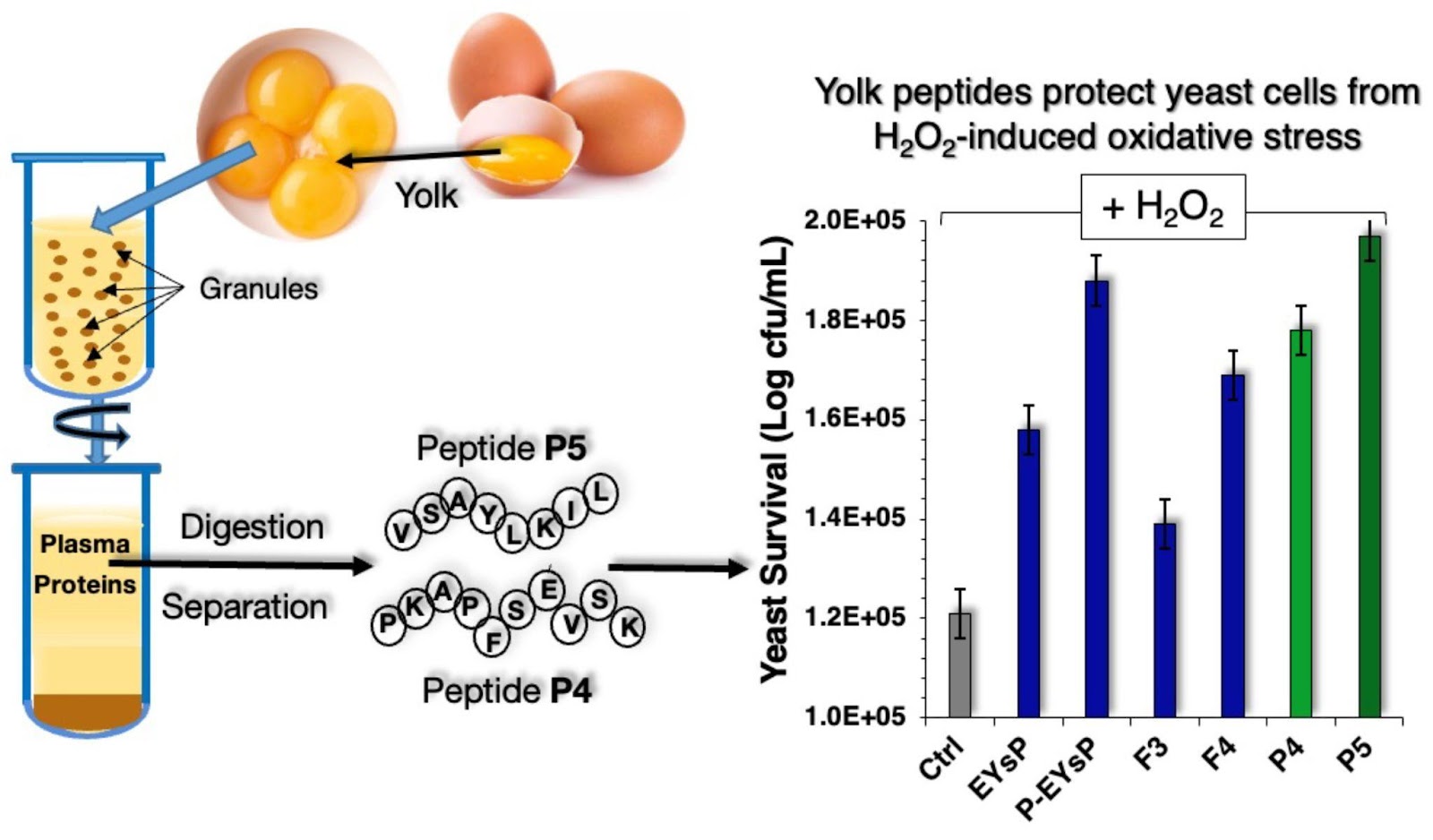Identification of potent antioxidant bioactive peptides from the soluble proteins of chicken egg yolk
DOI:
https://doi.org/10.31989/ffs.v3i6.1110Abstract
Background: Eggs are an excellent nutrient-dense food containing proteins, fats, carbohydrates, minerals, and vitamins. While many proteins are present in egg yolk, there arefew studies on their health benefits.
Objective: The aim of this study was to explore the antioxidant peptides derived from the soluble protein fractions of egg yolk. Lipids and lipoproteins were removed with activated carbon and centrifugation after water dilution at acidic pH.
Materials and Methods: Compared with 3.6 grams of protein in egg white, egg yolk contains 2.7 grams of protein in a single large egg. The egg yolk soluble protein (EYsP) was digested with pepsin for 2h at pH 3.0 (P-EYsP), followed by digestion with trypsin (P-EYsP-T), α-chymotrypsin (P-EYsP-α), or both enzymes (P-EYsP-T/α). The most active digest was fractionated using sephacryl S-100 gel filtration, followed by reversed phase-HPLC of the most active fraction. The antioxidant activities were evaluated using a superoxide anion-generating system of xanthine oxidase, DPPH-scavenging assay, and yeast cells as an oxidative-stress tolerance cellular model.
Results: The intact proteins (EYsP) showed antioxidant activity, but pepsin hydrolysate (P-EYsP) exhibited greater superoxide-scavenging activities than EYsP, while P-EYsP-T, P-EYsP-α and P-EYsP-T/α lacked activities. The P-EYsP and its subsequent proteases (P-EYsP-T, P-EYsP-α and P-EYsP-T/α) exhibited significant DPPH reduction, but P-EYsP-T, P-EYsP-α and P-EYsP-T/α exhibited the strongest DPPH reduction activities. MALDI-TOF-MS analysis revealed five major antioxidant peptides, two derived from yolk glycoprotein 40 (859 Da, 883Da), two from lipovitelline (901Da, 945 Da), and one from livetin (1089 Da). The peptides exhibited potent superoxide anion as well as DPPH scavenging activities and markedly enhanced the tolerance of yeast cells against peroxide-induced oxidative stress.
Conclusion: The results show that these bioactive peptides hold a fascinating opportunity for their potential as nutraceuticals in prevention and combating oxidative stress-associated diseases.

Keywords: Egg yolk proteins; bioactive peptides; antioxidant; superoxide-scavenging; DPPH-reduction; yeast tolerance
Downloads
Published
Issue
Section
License
Authors retain the copyright of their articles and grant the Functional Food Center (FFC) and its journals the right of first publication under the terms of the Creative Commons Attribution 4.0 International License.
This license permits unrestricted use, distribution, and reproduction in any medium, including commercial use, provided the original author(s) and source are properly credited. Authors may post and share their published work freely, provided that the original publication in this journal is acknowledged.
By submitting to this journal, authors confirm that their manuscripts are original, not under consideration elsewhere, and that they hold the necessary rights to grant this license. The Functional Food Center encourages open scientific exchange and allows derivative and extended works, provided attribution to the original publication is maintained.